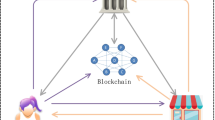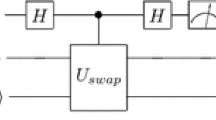Abstract
With the NIST competition for Post-Quantum (PQ) algorithms standardization coming to an end, it is urgent to address the question of integrating PQ cryptography in real-world protocols to anticipate difficulties and allow a smooth transition. This is especially true for banking applications where the ecosystem composed of a variety of cards and terminals is heterogeneous. Providing solutions to ensure efficiency and some kind of backward compatibility is mandatory. In this work, we provide the first analysis of card-based payments with respect to these questions. We integrate post-quantum algorithms in existing protocols, and propose hybrid versions. We implement them on banking smart-cards and analyse the impacts on various aspects of the product, from production to actual transactions with terminals. Our work shows that such products are possible, but we identify several issues to overcome in the near feature in order to keep the same level of usability.
Access this chapter
Tax calculation will be finalised at checkout
Purchases are for personal use only
Similar content being viewed by others
References
Albrecht, M.R., et al.: Classic McEliece: conservative code-based cryptography. Technical report (2020). https://classic.mceliece.org/
Alkim, E., Ducas, L., Pöppelmann, T., Schwabe, P.: NewHope without reconciliation. Cryptology ePrint Archive, Report 2016/1157 (2016). https://eprint.iacr.org/2016/1157
Alkim, E., Ducas, L., Pöppelmann, T., Schwabe, P.: Post-quantum key exchange - A new hope. In: Holz, T., Savage, S. (eds.) USENIX Security 2016, pp. 327–343. USENIX Association (2016)
ANSSI: ANSSI views on the Post-Quantum Cryptography transition (2022). https://www.ssi.gouv.fr/en/publication/anssi-views-on-the-post-quantum-cryptography-transition/
Avanzi, R., et al.: CRYSTALS-Kyber - Algorithm specifications and supporting documentation. Technical report (2021). https://pq-crystals.org/kyber/index.shtml, version 3.2
Bai, S., et al.: CRYSTALS-dilithium - algorithm specifications and supporting documentation. Technical report (2021). https://pq-crystals.org/dilithium/, version 3.1
Basso, A., et al.: SABER: Mod-LWR based KEM (Round 3 Submission). Technical report. https://www.esat.kuleuven.be/cosic/pqcrypto/saber/
Beullens, W.: Improved cryptanalysis of UOV and rainbow. In: Canteaut, A., Standaert, F.-X. (eds.) EUROCRYPT 2021. LNCS, vol. 12696, pp. 348–373. Springer, Cham (2021). https://doi.org/10.1007/978-3-030-77870-5_13
Beullens, W.: Breaking rainbow takes a weekend on a laptop. IACR Cryptol. ePrint Arch, p. 214 (2022). https://eprint.iacr.org/2022/214
Bindel, N., Herath, U., McKague, M., Stebila, D.: Transitioning to a quantum-resistant public key infrastructure. In: Lange, T., Takagi, T. (eds.) PQCrypto 2017. LNCS, vol. 10346, pp. 384–405. Springer, Cham (2017). https://doi.org/10.1007/978-3-319-59879-6_22
Bos, J.W., Carlson, B., Renes, J., Rotaru, M., Sprenkels, D., Waters, G.P.: Post-quantum secure boot on vehicle network processors. Cryptology ePrint Archive, Paper 2022/635 (2022). https://eprint.iacr.org/2022/635
Braithwaite, M.: (2016). https://security.googleblog.com/2016/07/experimenting-with-post-quantum.html
van den Breekel, J., Ortiz-Yepes, D.A., Poll, E., de Ruiter, J.: EMV in a nutshell (2016). https://www.cs.ru.nl/ erikpoll/papers/EMVtechreport.pdf
Brzuska, C., Smart, N.P., Warinschi, B., Watson, G.J.: An analysis of the EMV channel establishment protocol. In: Sadeghi, A.R., Gligor, V.D., Yung, M. (eds.) ACM CCS 2013, pp. 373–386. ACM Press (2013). https://doi.org/10.1145/2508859.2516748
Chen, C., et al.: NTRU - algorithm specifications and supporting documentation. Technical report (2020). https://ntru.org/
Chen, M.S., et al.: Rainbow. Technical report (2020). https://www.pqcrainbow.org/
Cooper, D.A., Apon, D.C., Dang, Q.H., Miller, M.S.D.M.J.D.C.A.: Recommendation for stateful hash-based signature schemes. Technical report, NIST (2020). https://doi.org/10.6028/NIST.SP.800-208
Diffie, W., van Oorschot, P.C., Wiener, M.J.: Authentication and authenticated key exchanges. Des. Codes Crypt. 2, 107–125 (1992)
EMVCo: EMV - Integrated Circuit Card Specifications for Payment Systems - Common Payment Application Specification (2005). version 1.0
EMVCo: EMV - Integrated Circuit Card Specifications for Payment Systems - Book 2 - Security and Key Management (2011). version 4.3
EMVCo: EMV - Integrated Circuit Card Specifications for Payment Systems - Book 3 - Application Specification (2011). version 4.3
EMVCo: EMV ECC Key Establishment Protocols (2012)
Fouque, P.A., et al.: Falcon: Fast-Fourier Lattice-based Compact Signatures over NTRU. Technical report (2020). https://falcon-sign.info/
Garrett, D., Ward, M.: Blinded Diffie-Hellman. In: Chen, L., Mitchell, C. (eds.) SSR 2014. LNCS, vol. 8893, pp. 79–92. Springer, Cham (2014). https://doi.org/10.1007/978-3-319-14054-4_6
Kannwischer, M.J., Rijneveld, J., Schwabe, P., Stoffelen, K.: pqm4: testing and benchmarking NIST PQC on ARM cortex-m4. IACR Cryptol. ePrint Arch, p. 844 (2019). https://eprint.iacr.org/2019/844
National Institute for Standards and Technology: Post-Quantum Cryptography Standardization. https://csrc.nist.gov/projects/post-quantum-cryptography/post-quantum-cryptography-standardization
Paul, S., Scheible, P.: Towards post-quantum security for cyber-physical systems: integrating PQC into industrial M2M communication. In: Chen, L., Li, N., Liang, K., Schneider, S. (eds.) ESORICS 2020. LNCS, vol. 12309, pp. 295–316. Springer, Cham (2020). https://doi.org/10.1007/978-3-030-59013-0_15
Schwabe, P., Stebila, D., Wiggers, T.: Post-quantum TLS without handshake signatures. In: Ligatti, J., Ou, X., Katz, J., Vigna, G. (eds.) ACM CCS 20, pp. 1461–1480. ACM Press (2020). https://doi.org/10.1145/3372297.3423350
Stadler, S., Sakaguti, V., Kaur, H., Fehlhaber, A.L.: Hybrid signal protocol for post-quantum email encryption. Cryptology ePrint Archive, Paper 2021/875 (2021). https://eprint.iacr.org/2021/875, https://eprint.iacr.org/2021/875
Author information
Authors and Affiliations
Corresponding author
Editor information
Editors and Affiliations
Rights and permissions
Copyright information
© 2023 The Author(s), under exclusive license to Springer Nature Switzerland AG
About this paper
Cite this paper
Bettale, L., De Oliveira, M., Dottax, E. (2023). Post-Quantum Protocols for Banking Applications. In: Buhan, I., Schneider, T. (eds) Smart Card Research and Advanced Applications. CARDIS 2022. Lecture Notes in Computer Science, vol 13820. Springer, Cham. https://doi.org/10.1007/978-3-031-25319-5_14
Download citation
DOI: https://doi.org/10.1007/978-3-031-25319-5_14
Published:
Publisher Name: Springer, Cham
Print ISBN: 978-3-031-25318-8
Online ISBN: 978-3-031-25319-5
eBook Packages: Computer ScienceComputer Science (R0)




